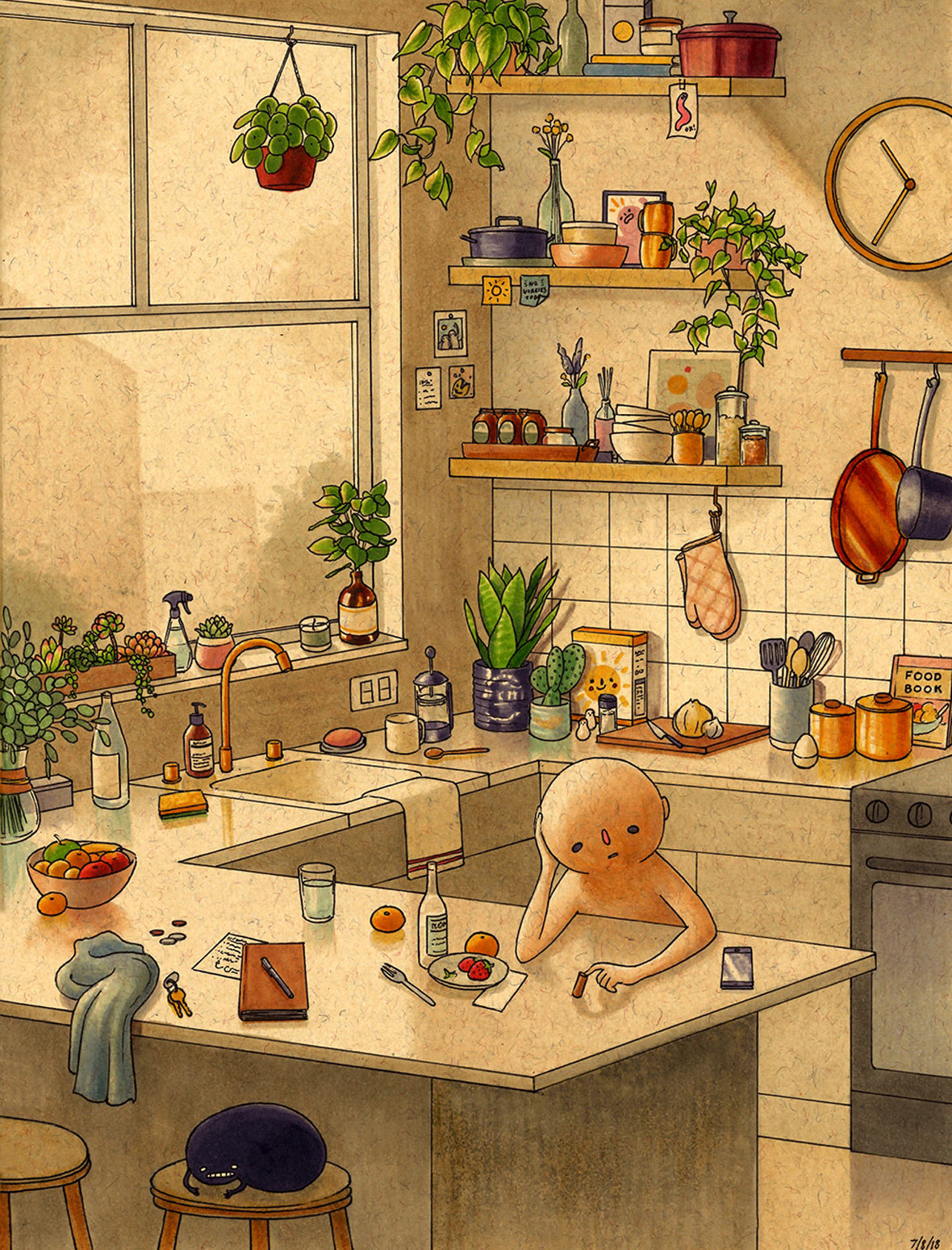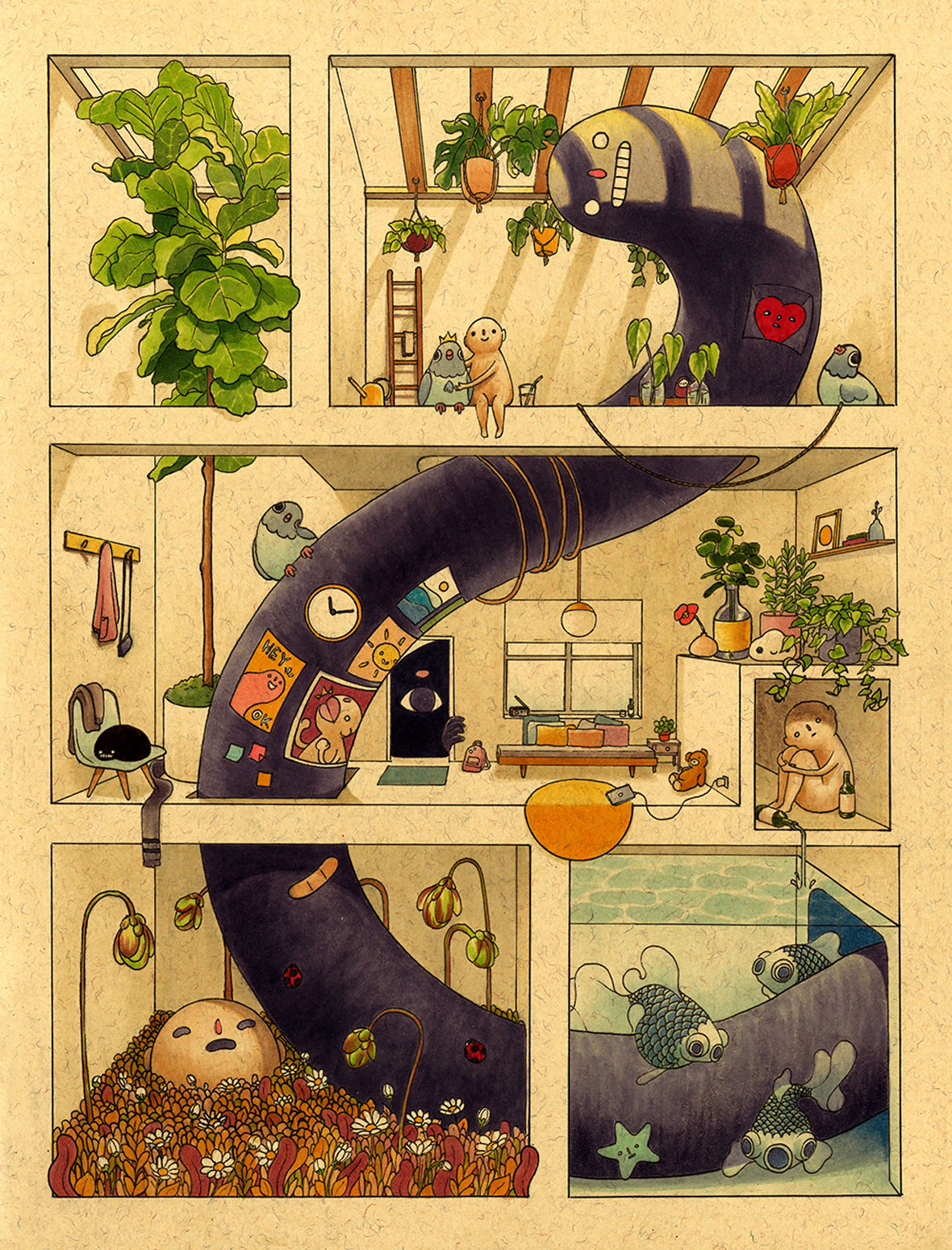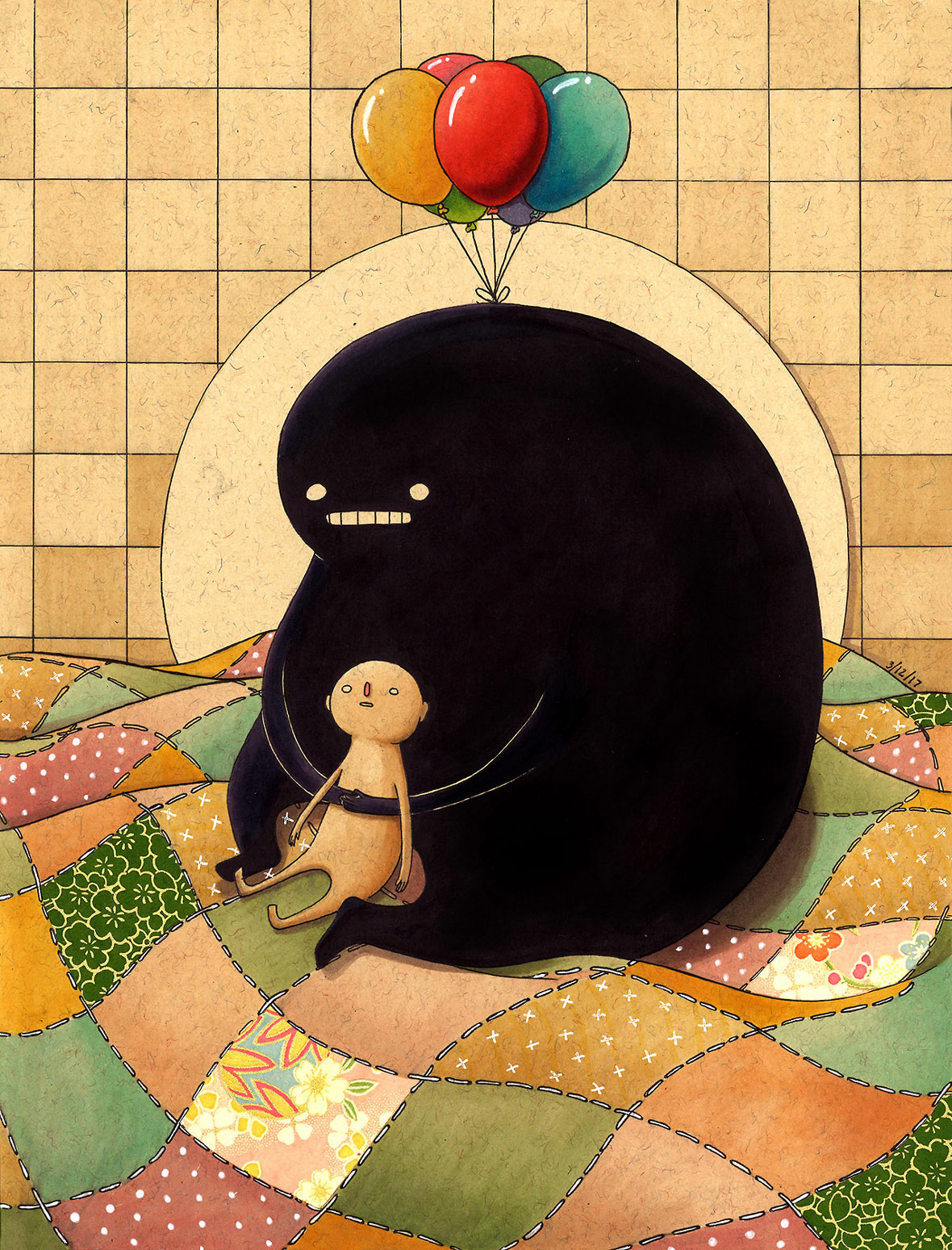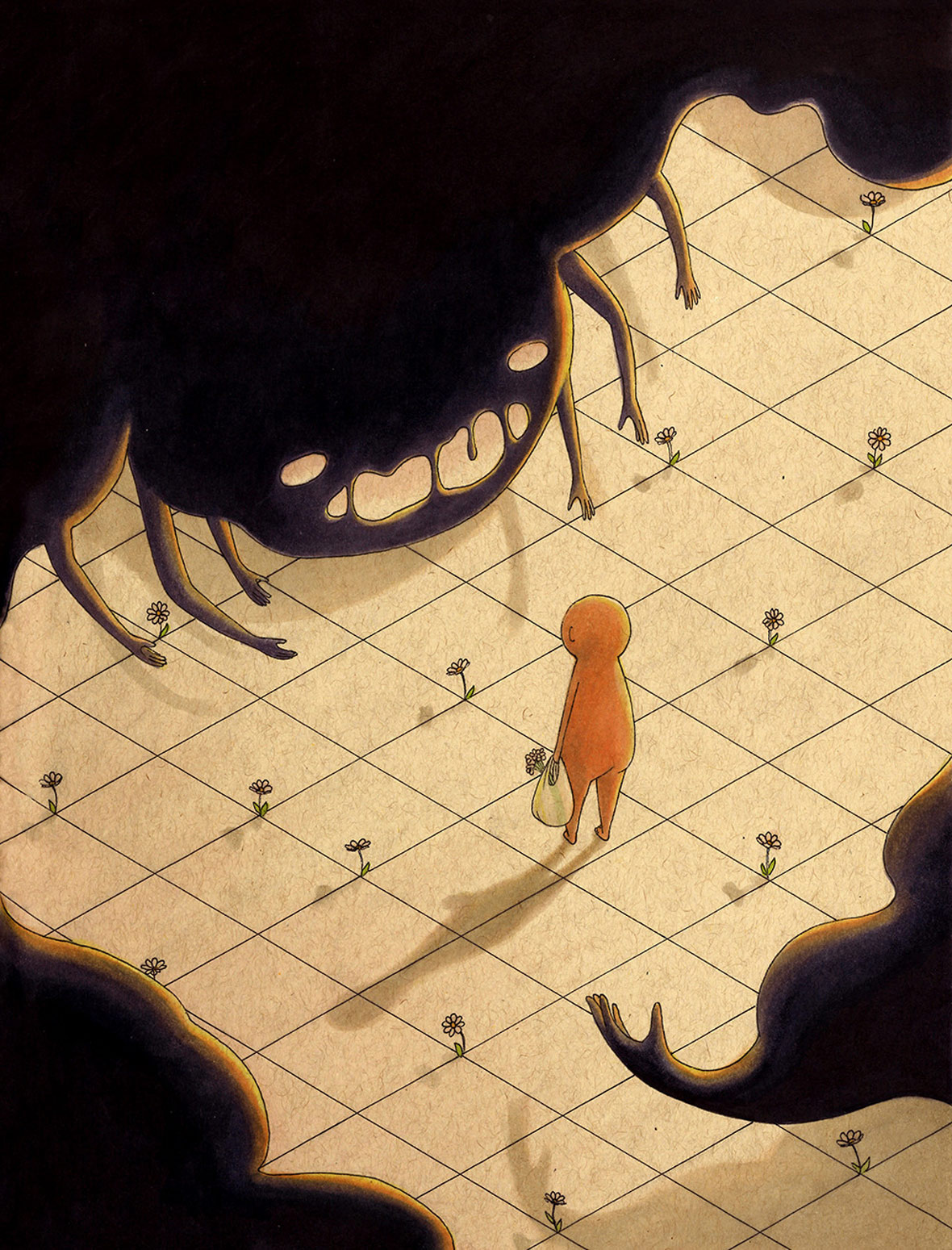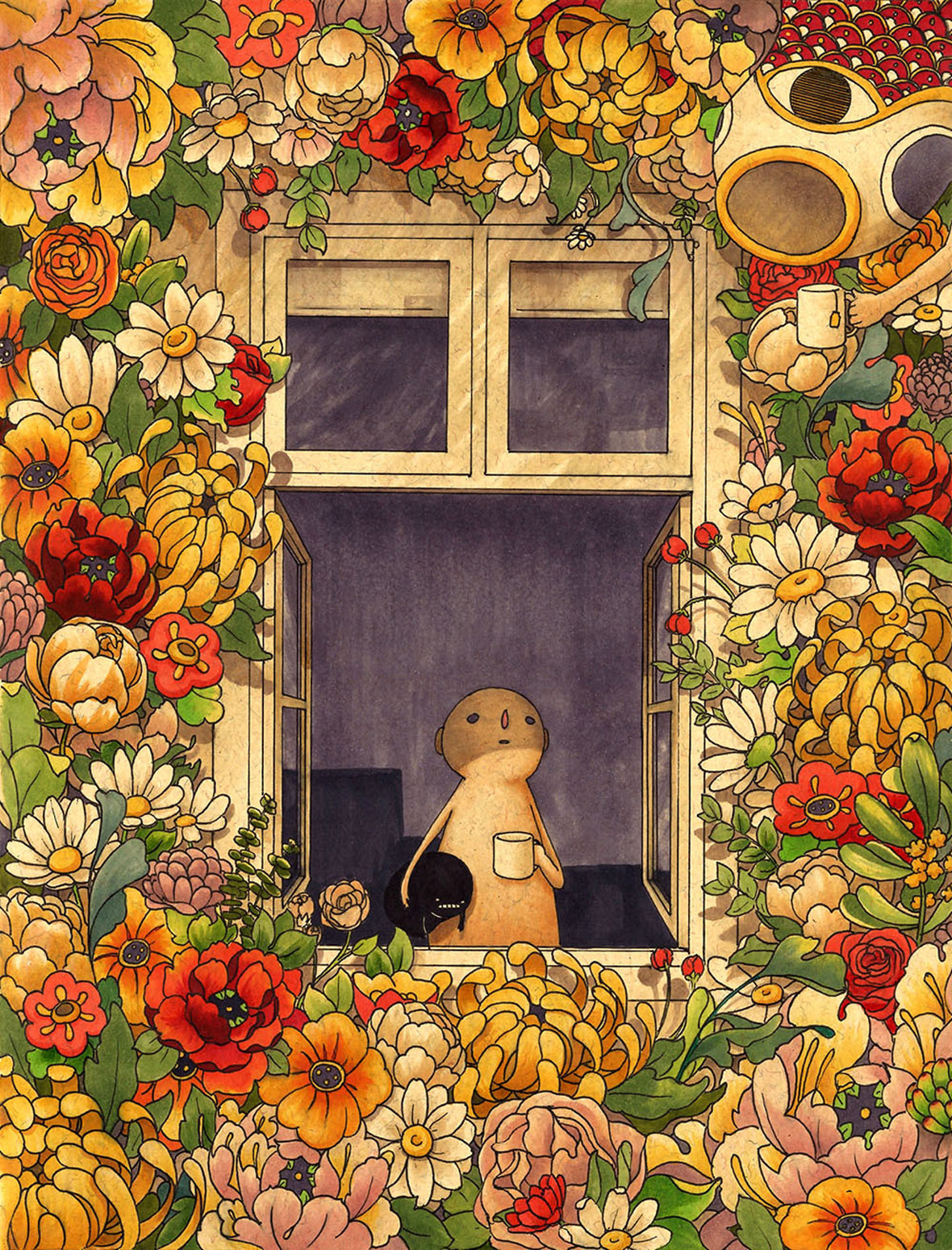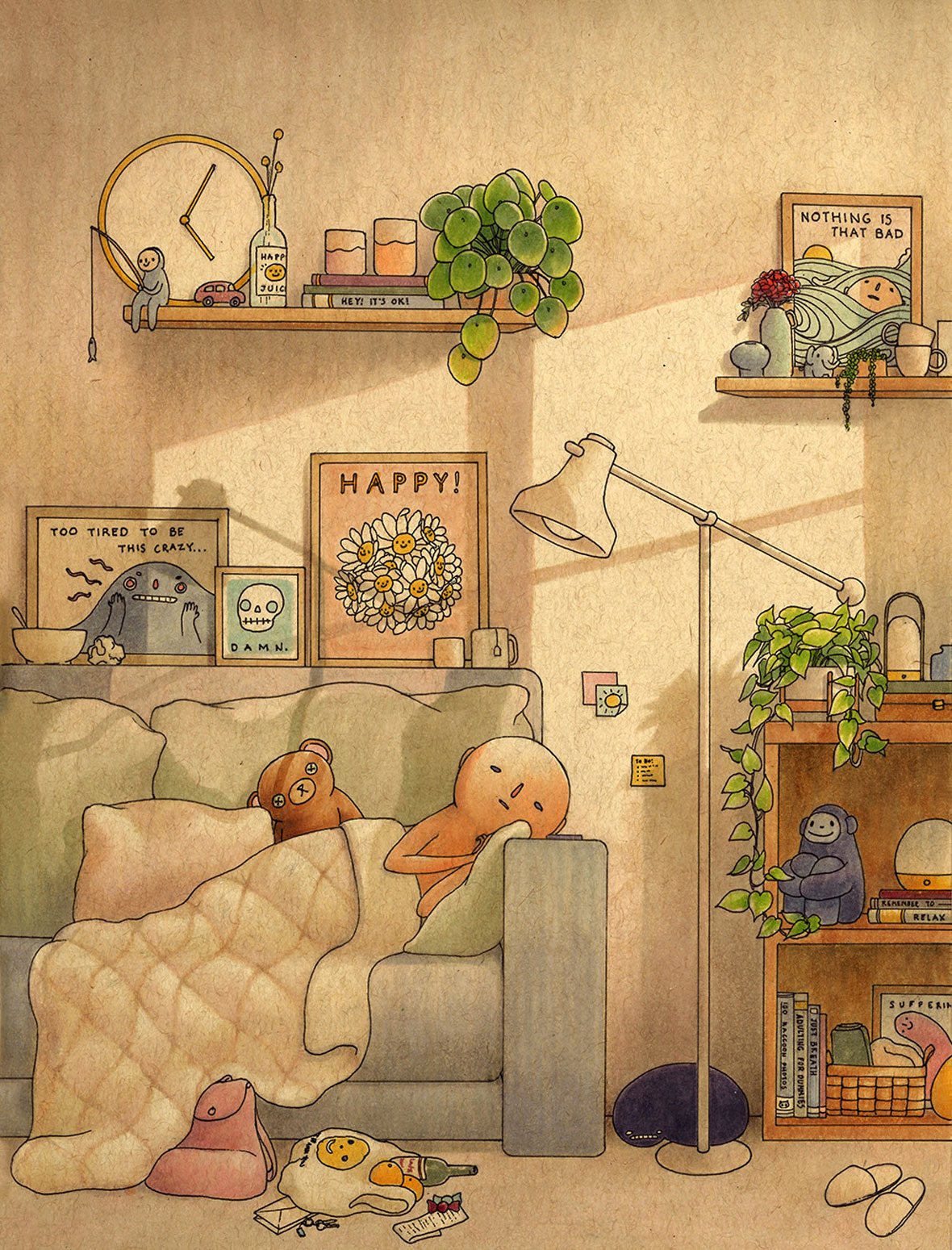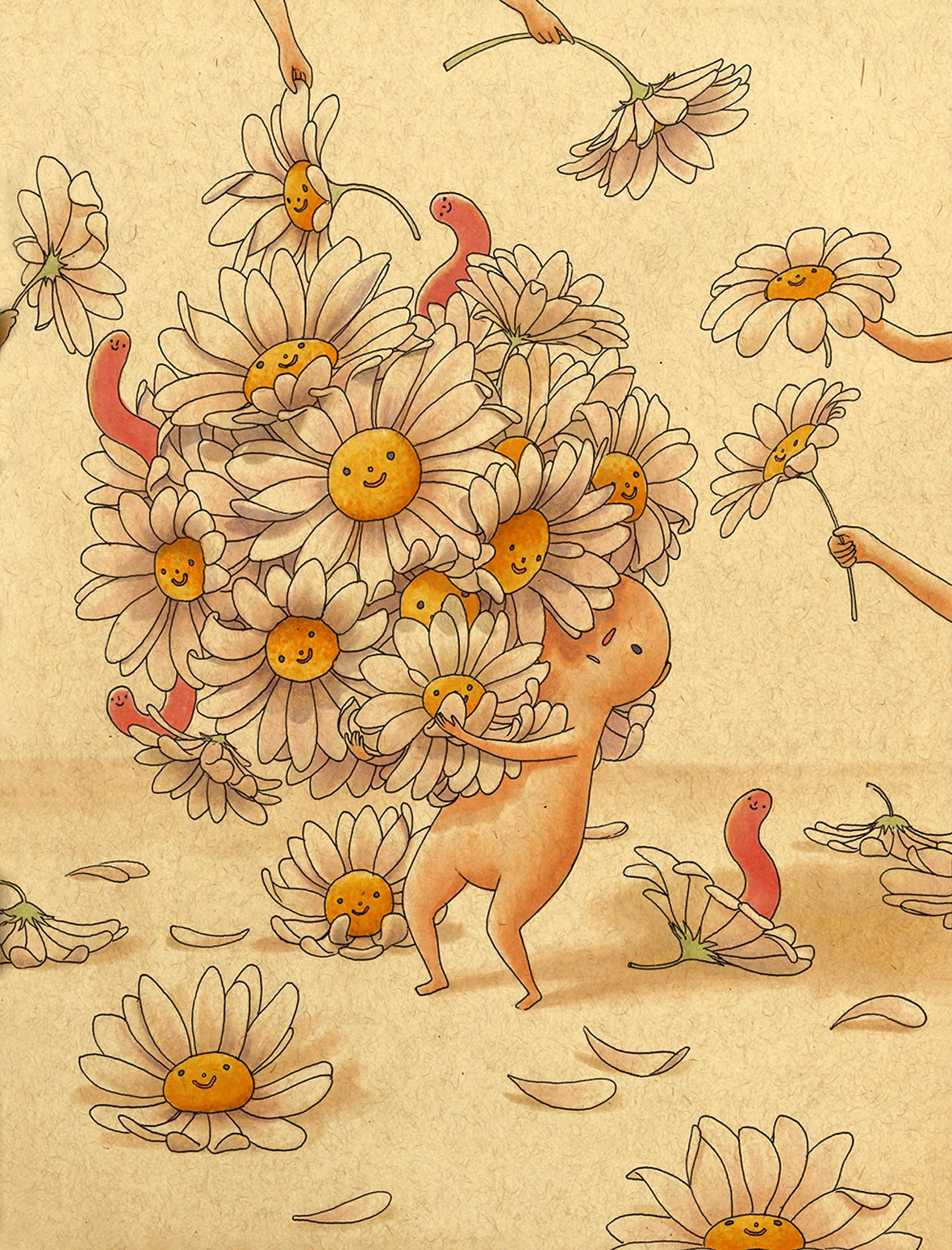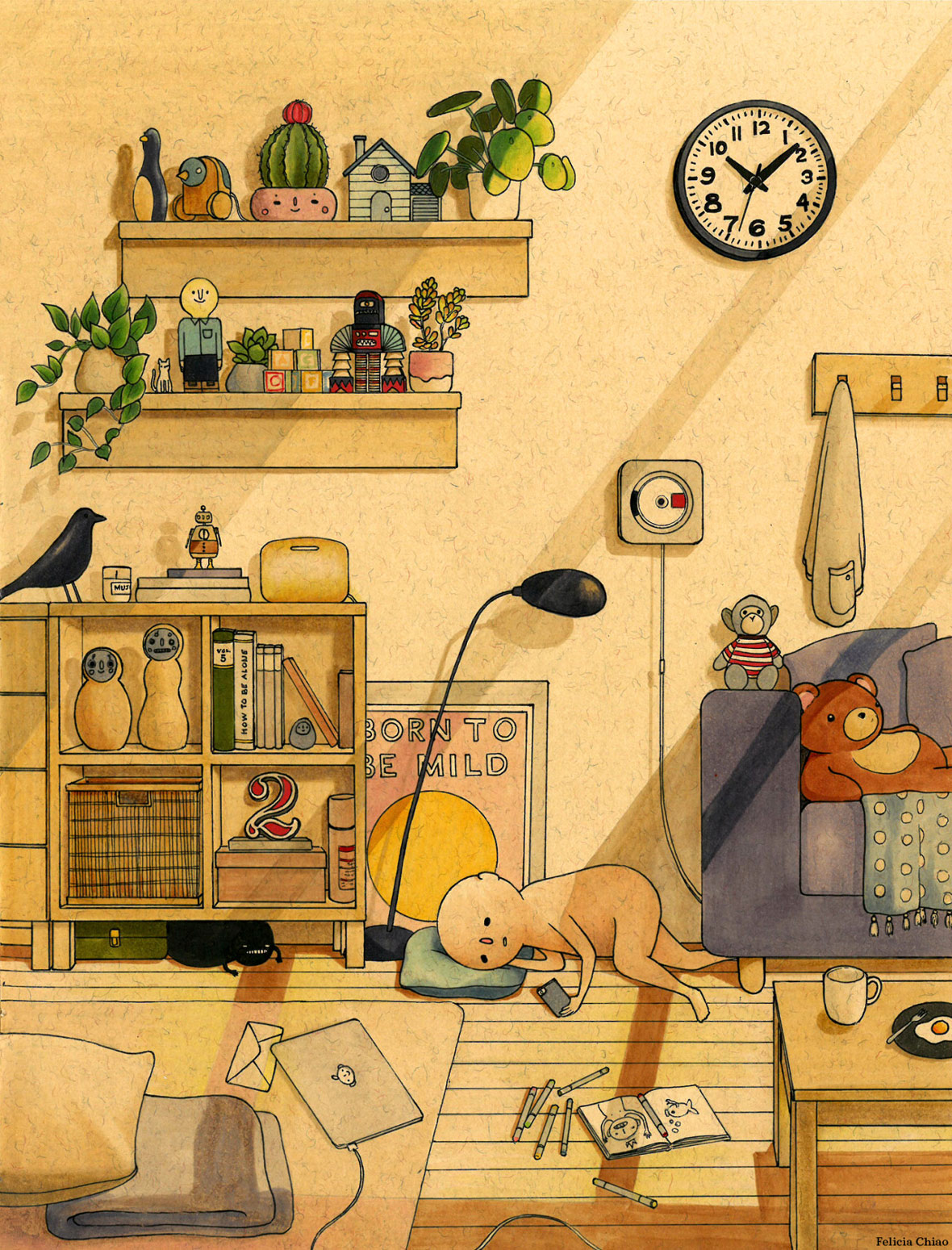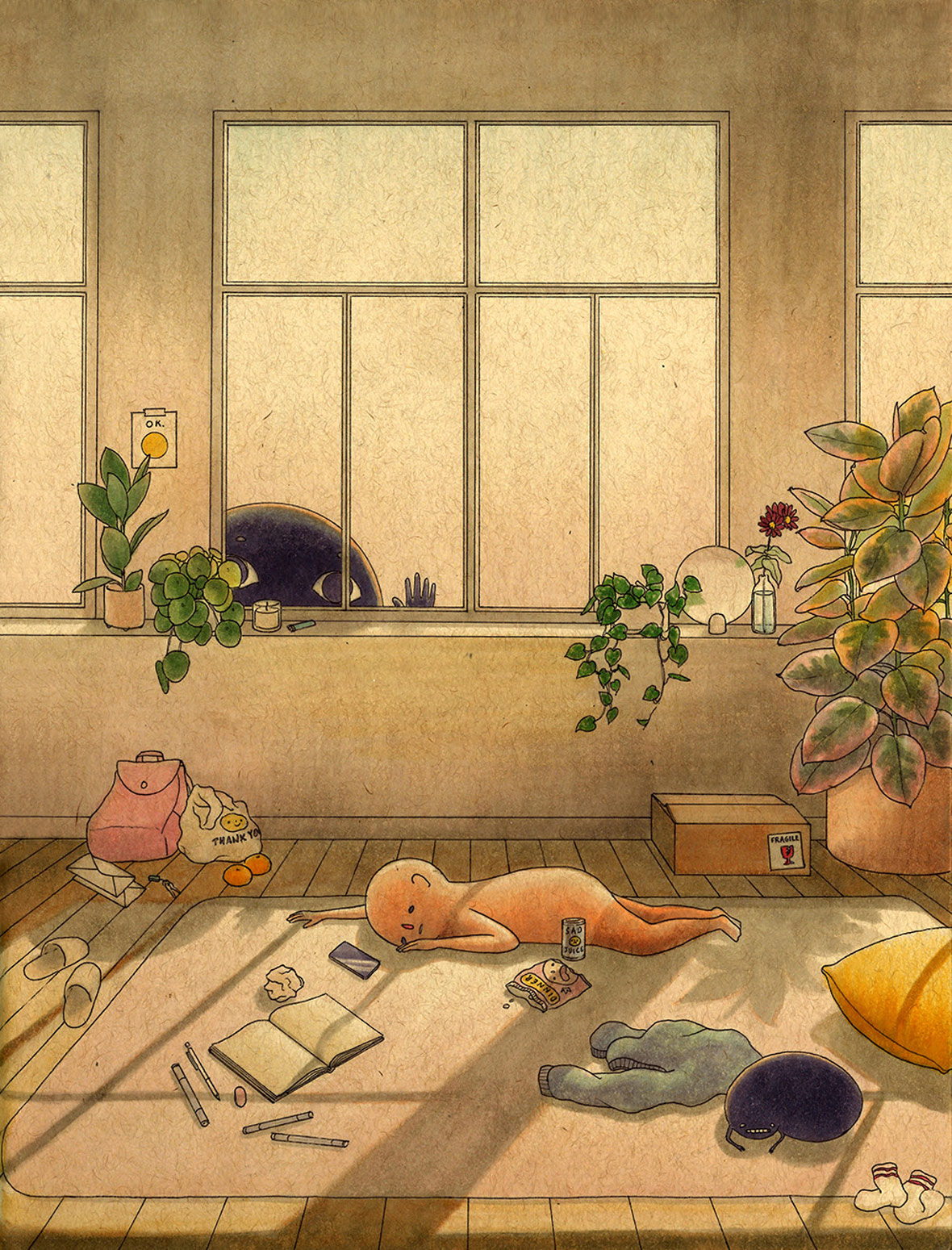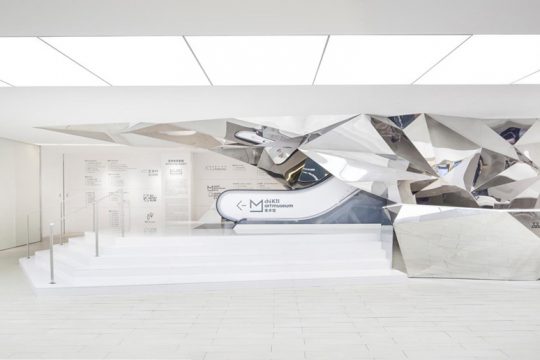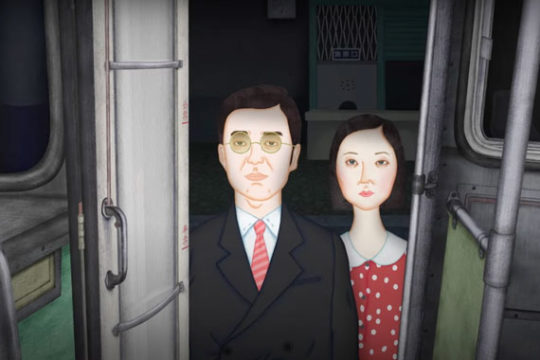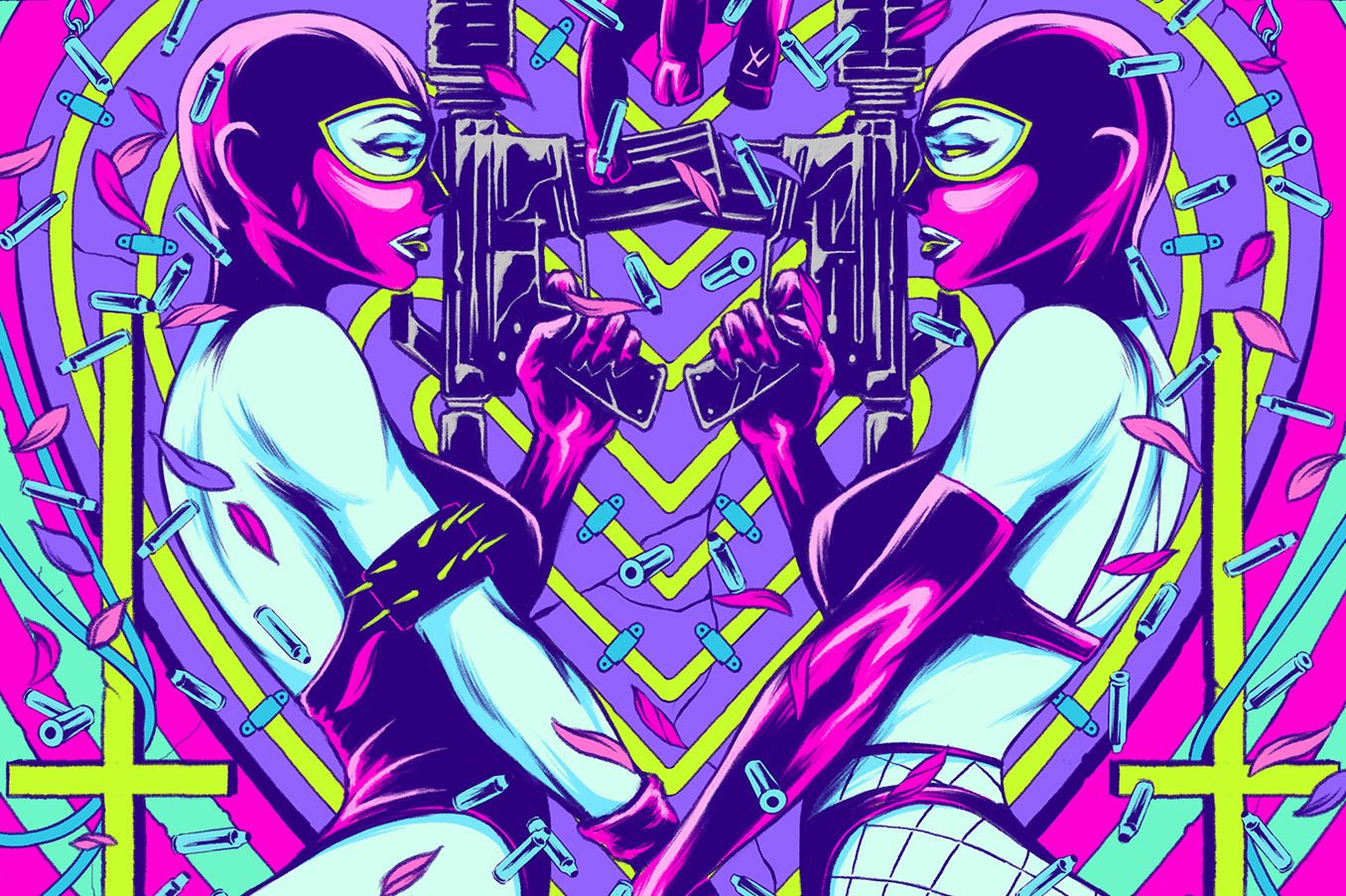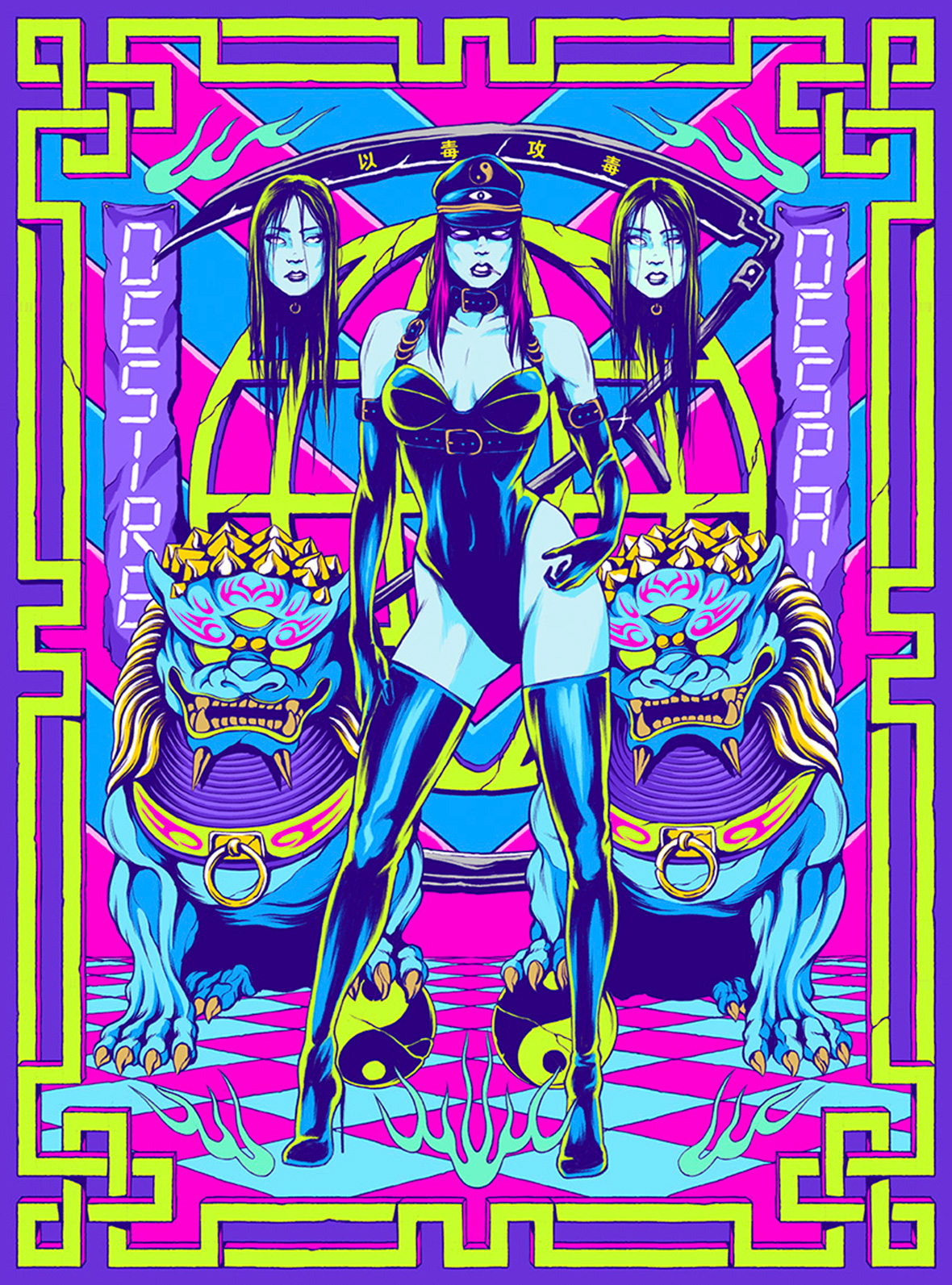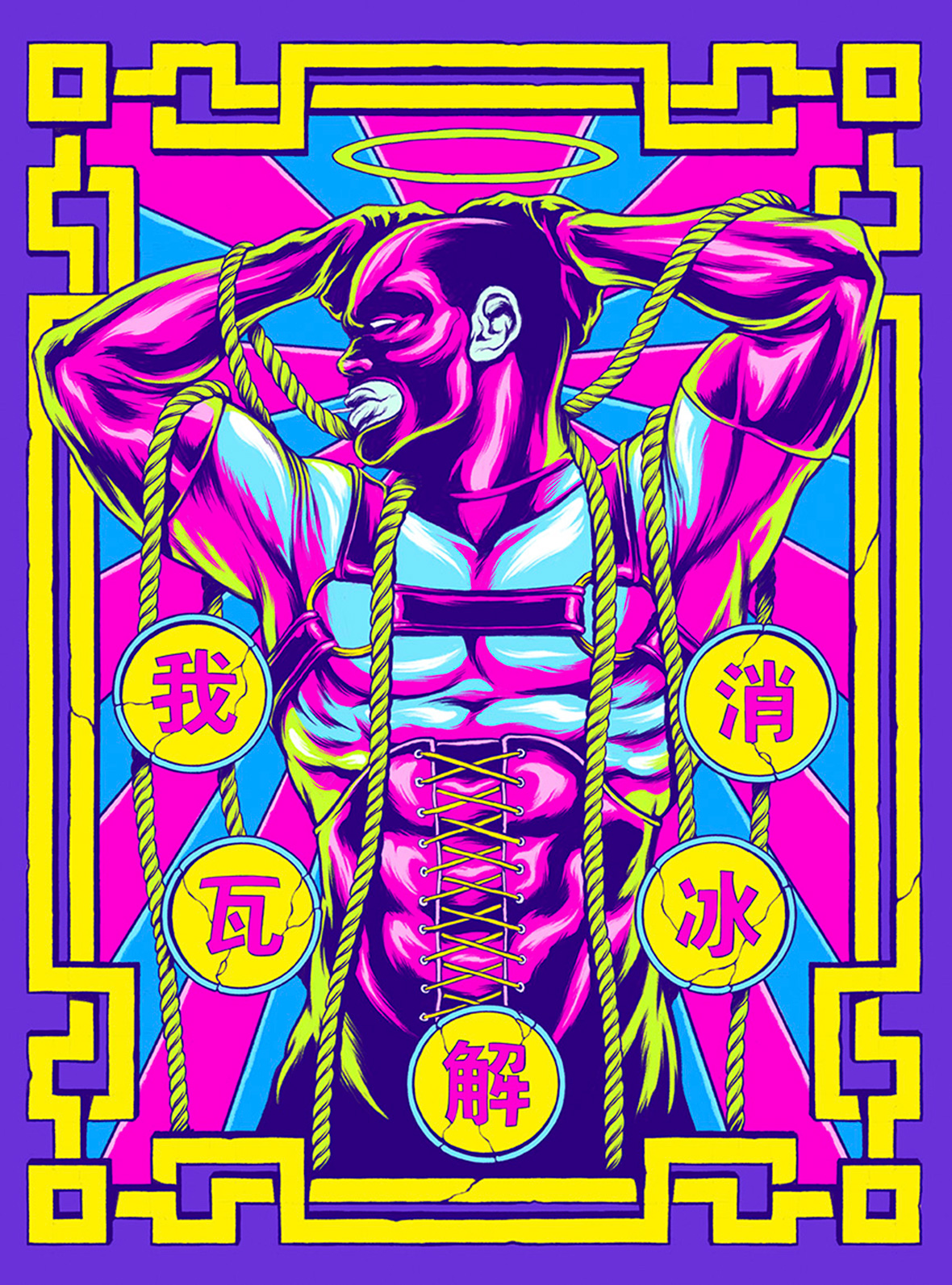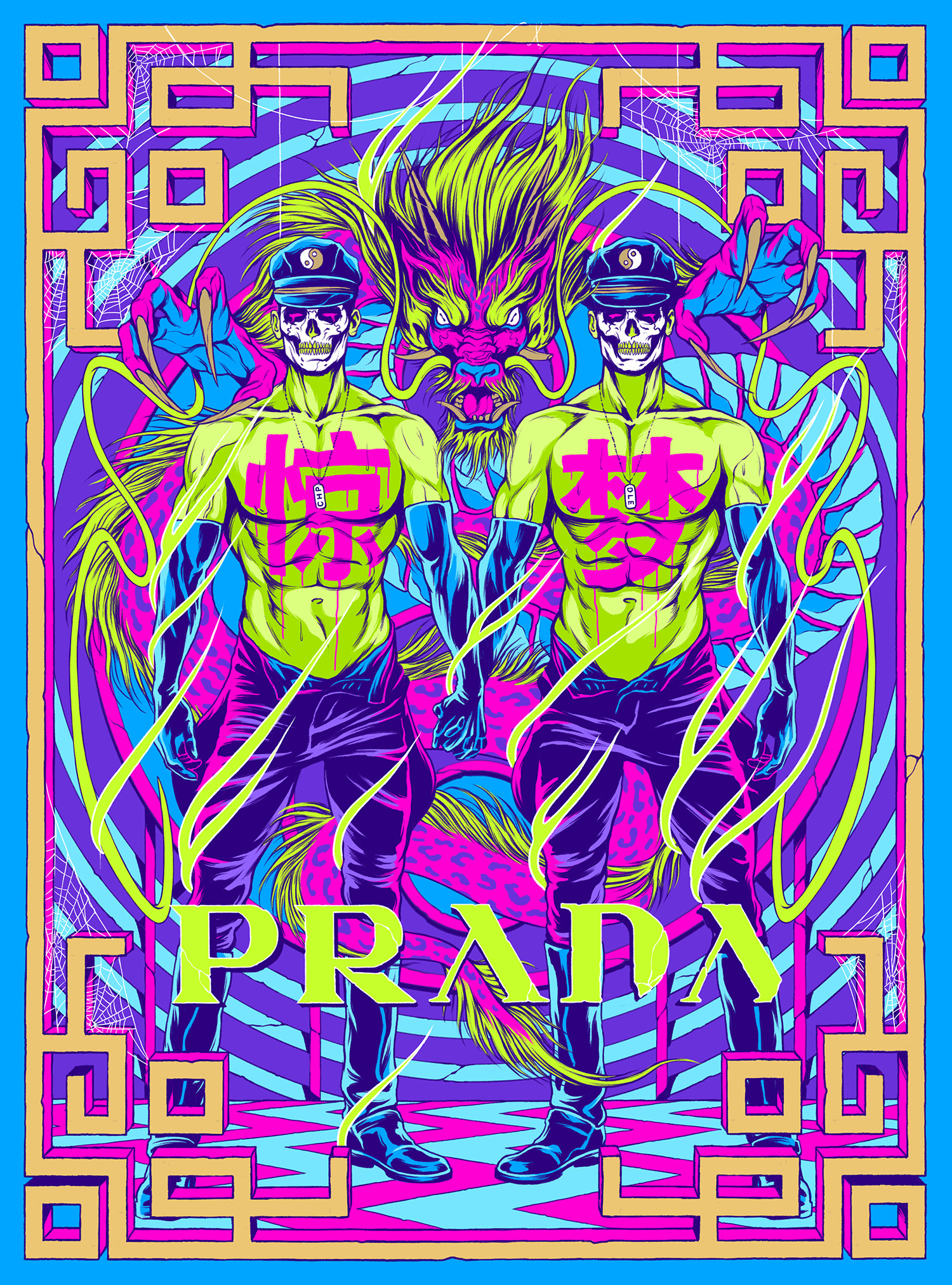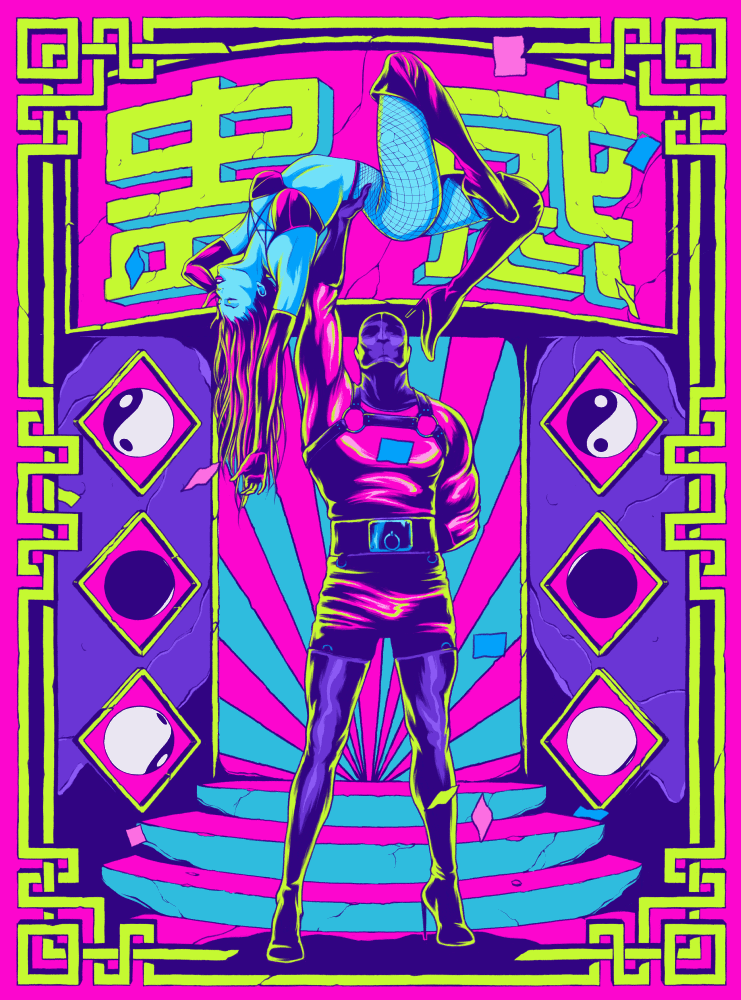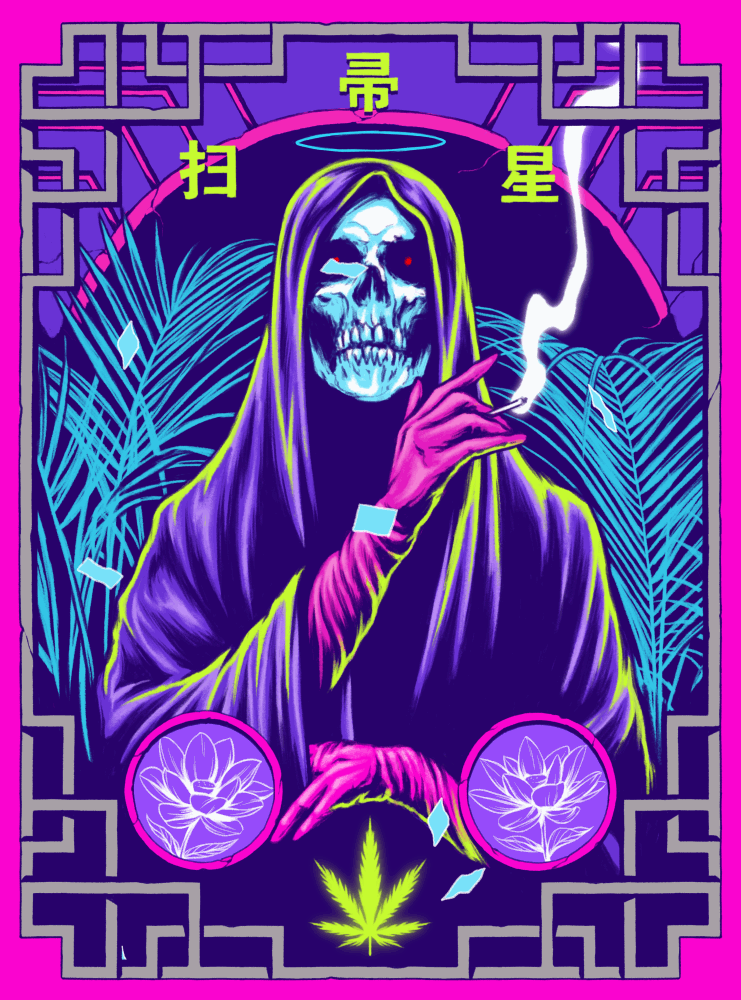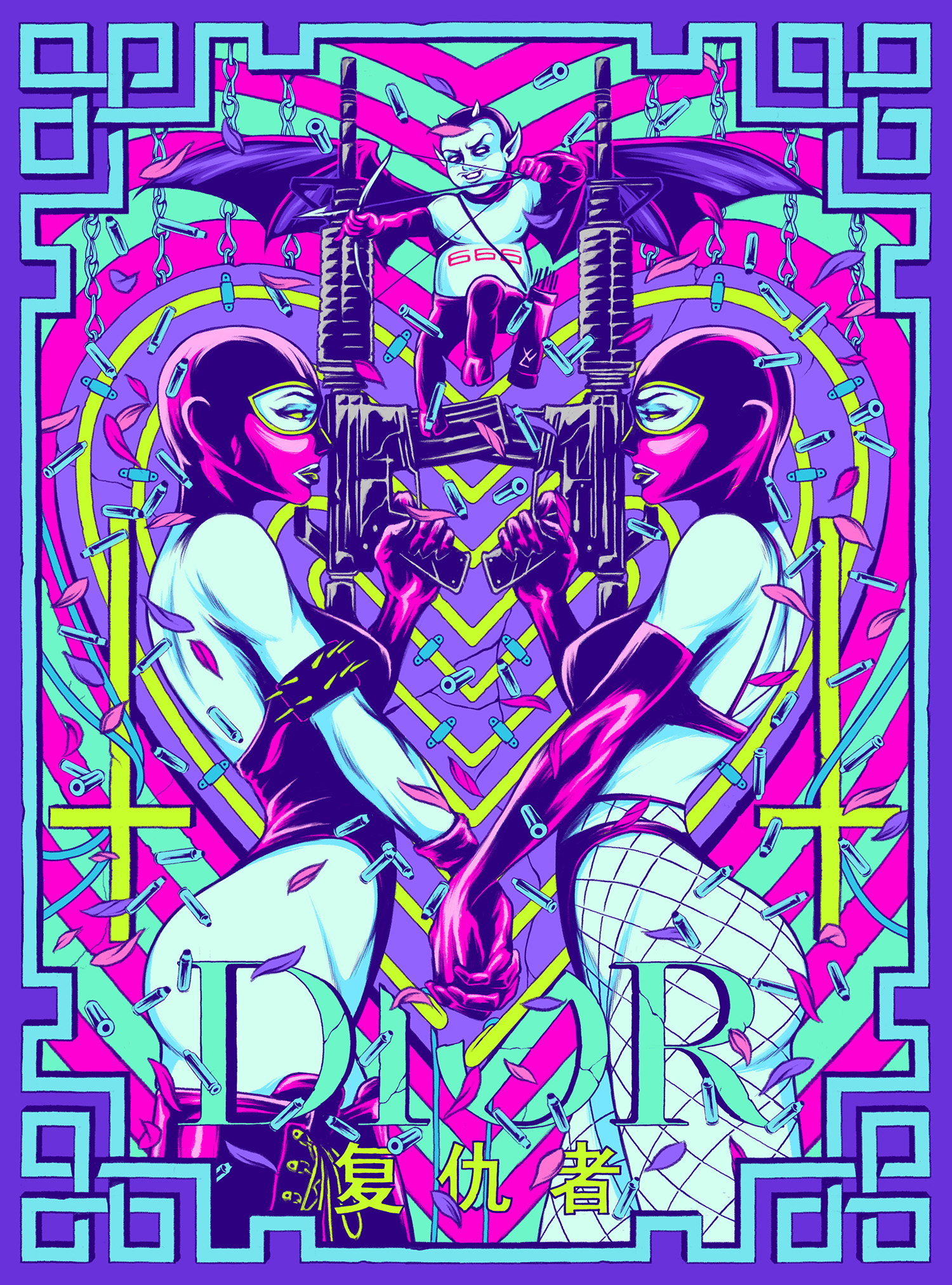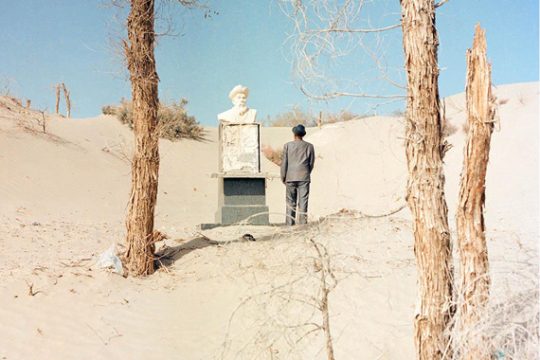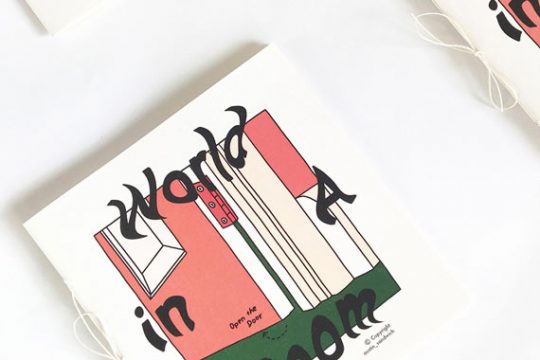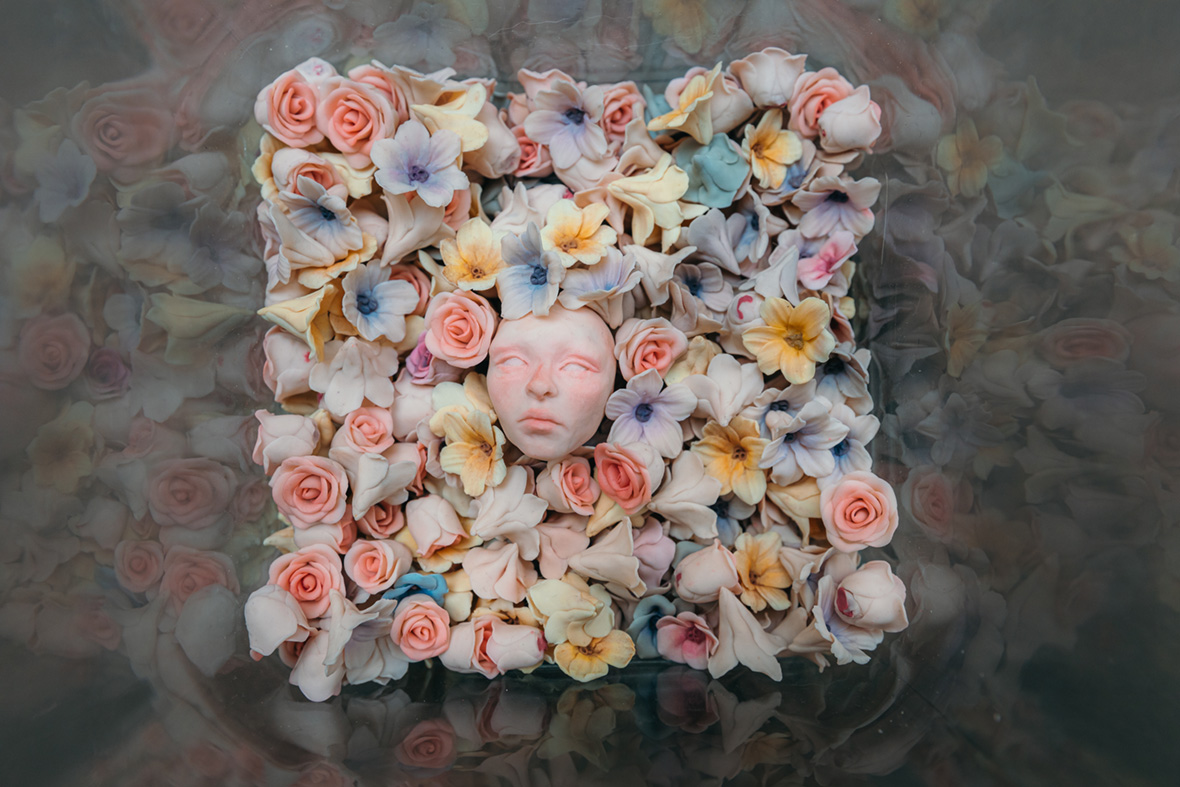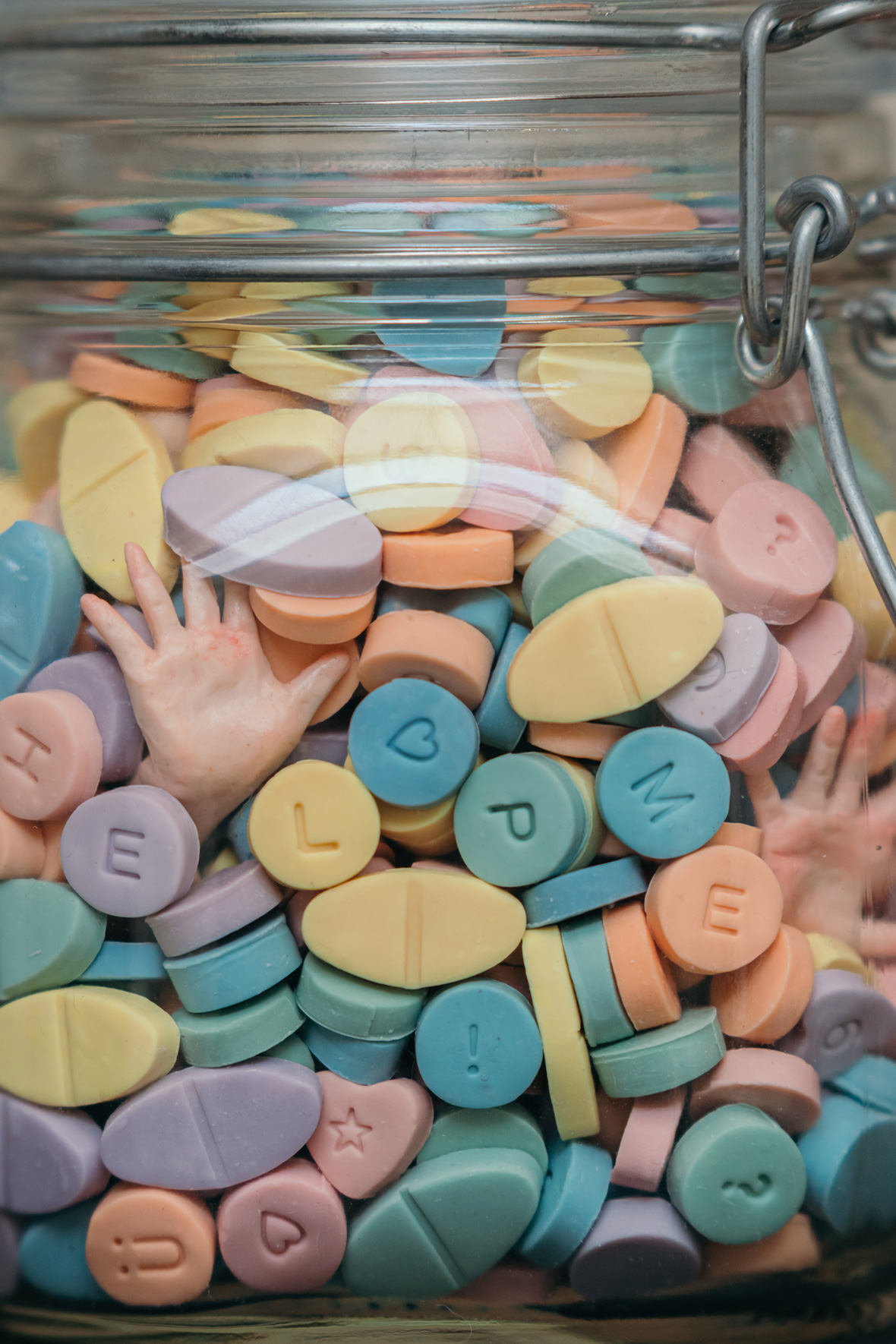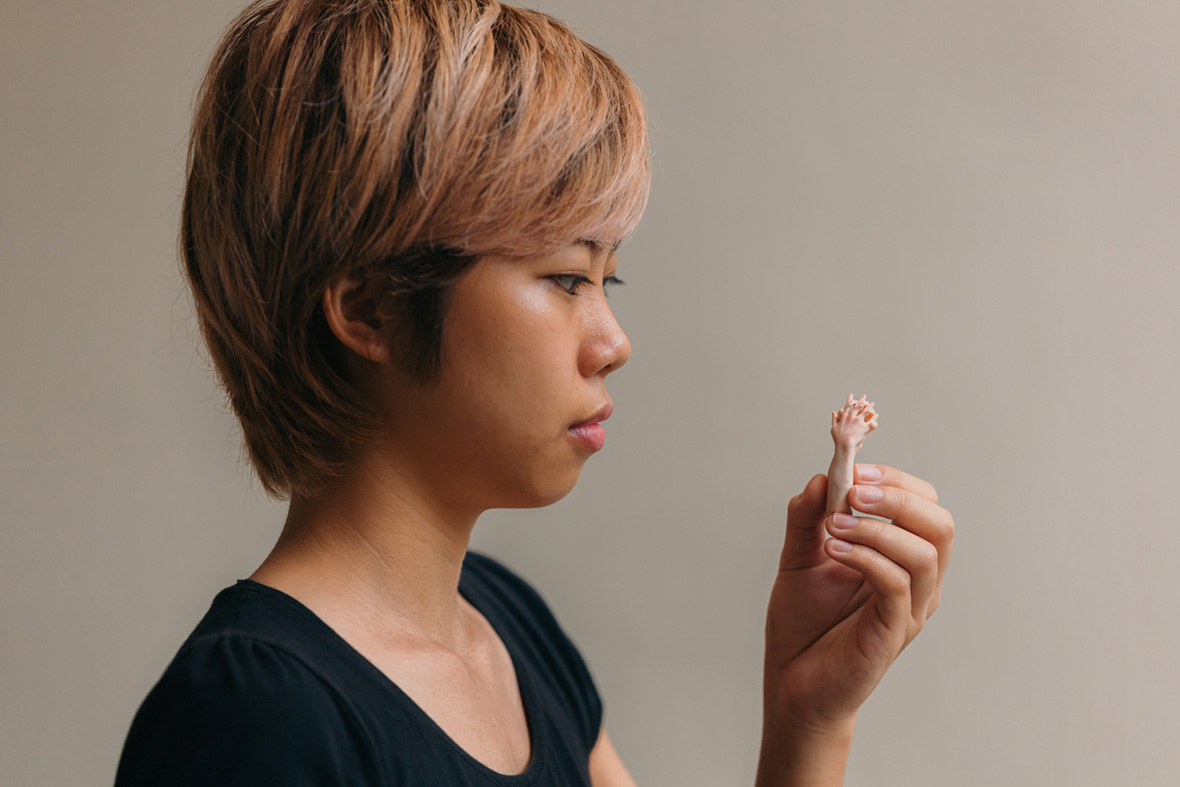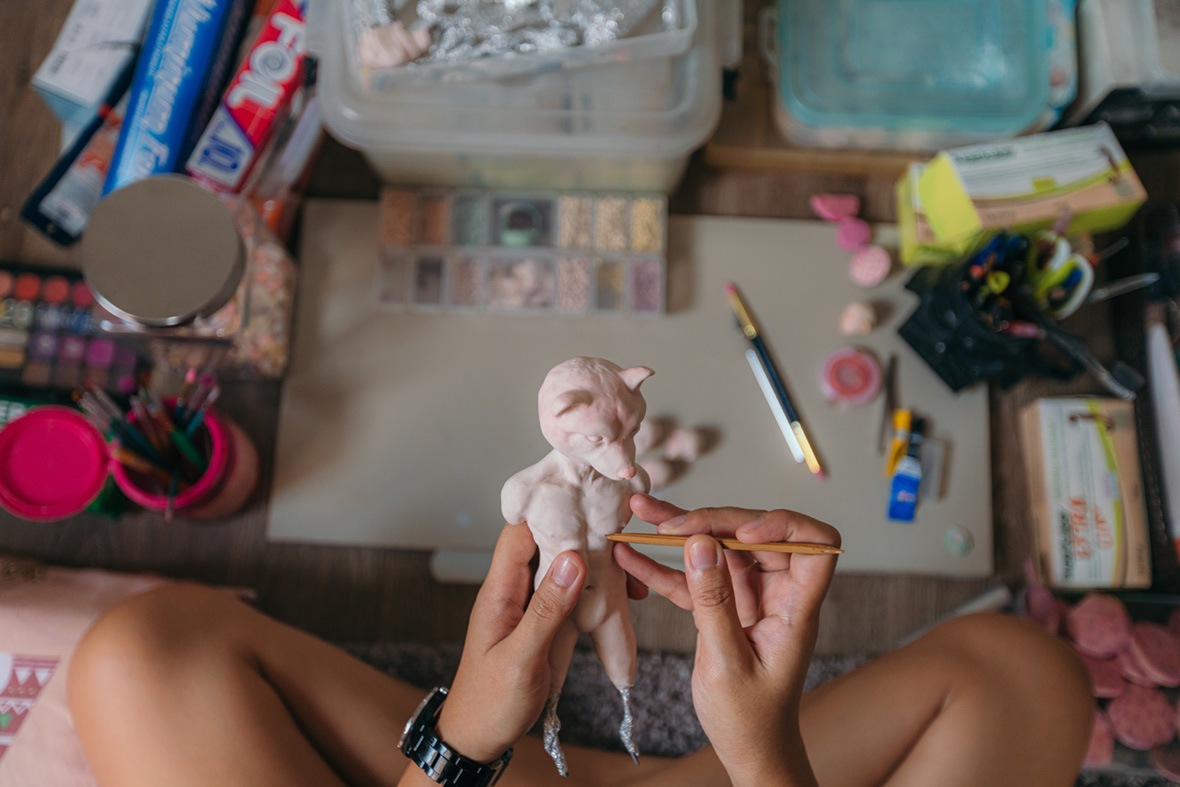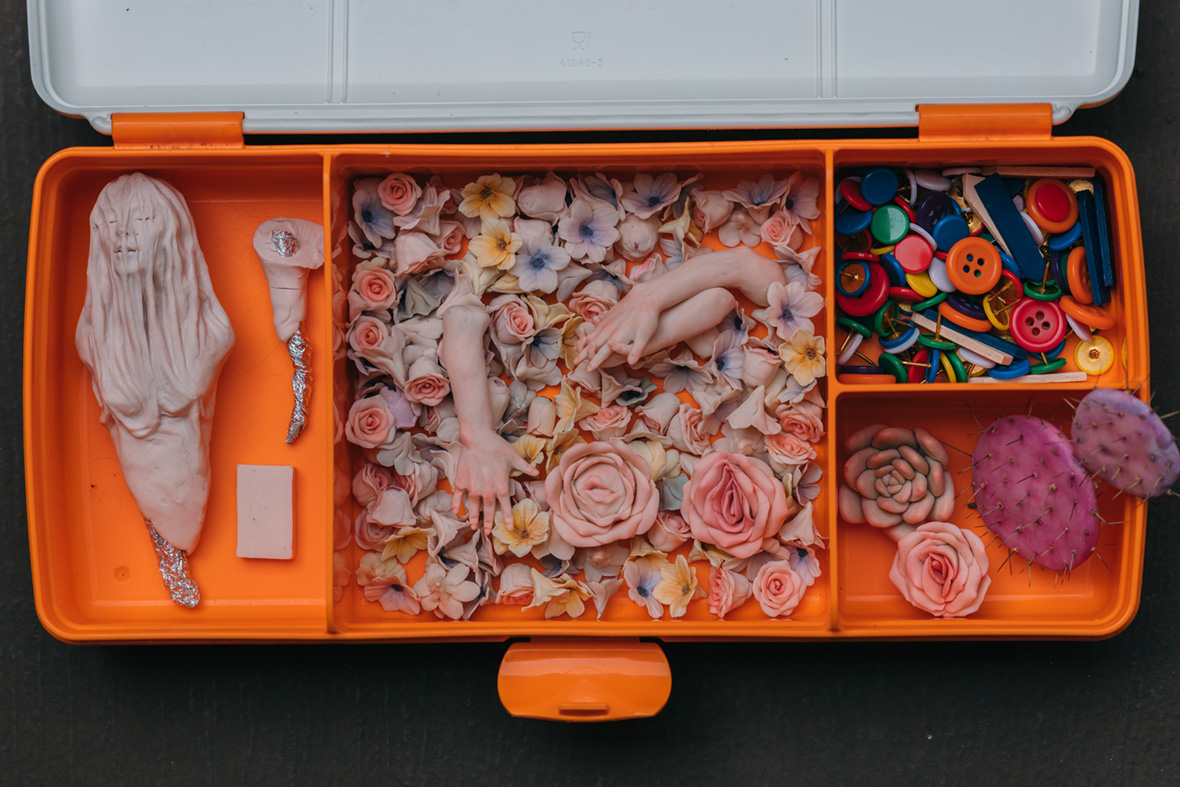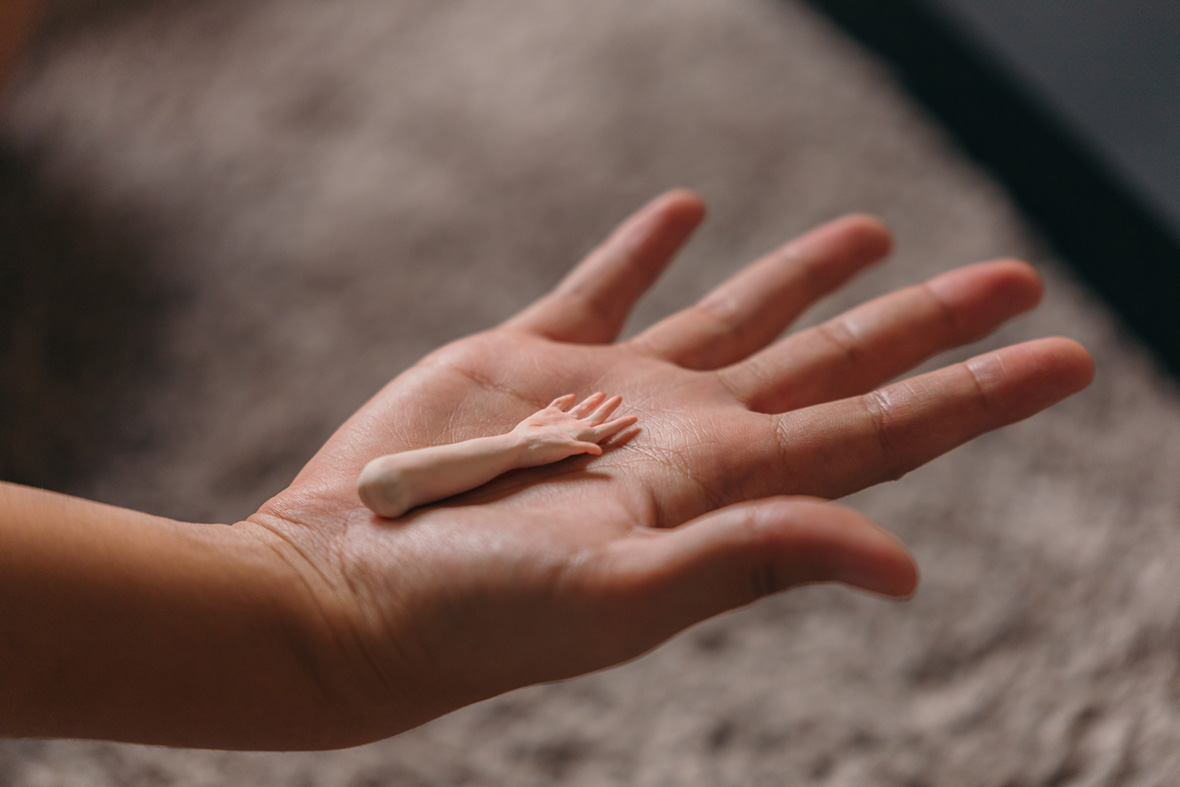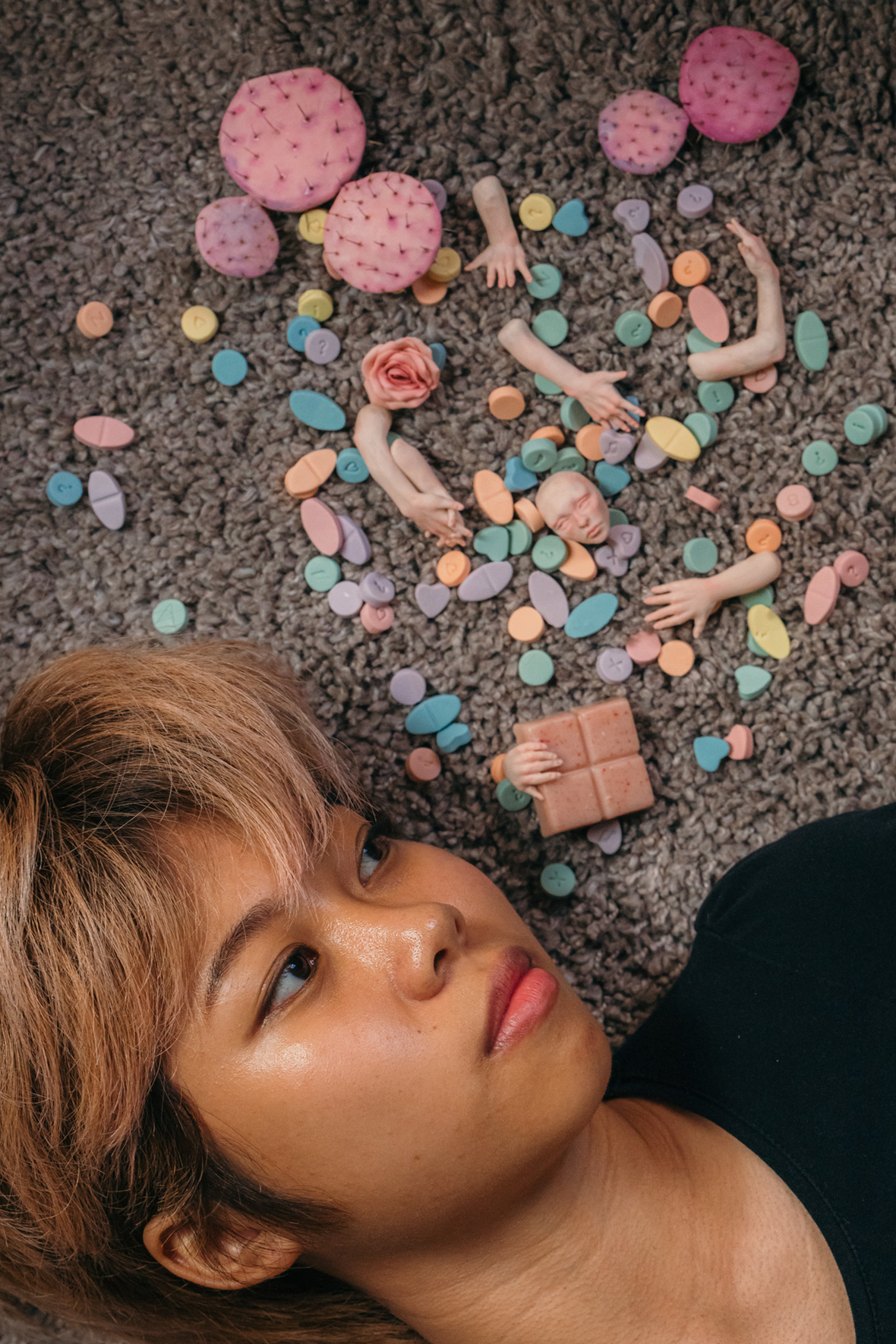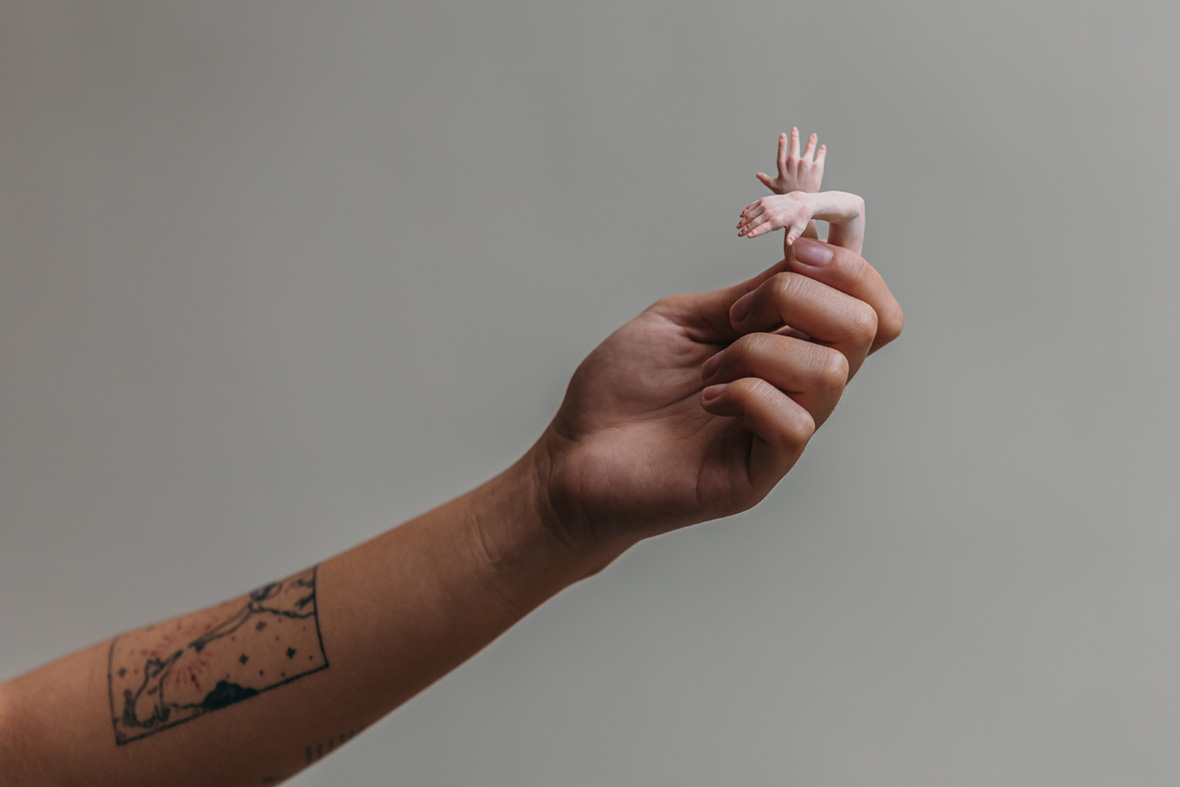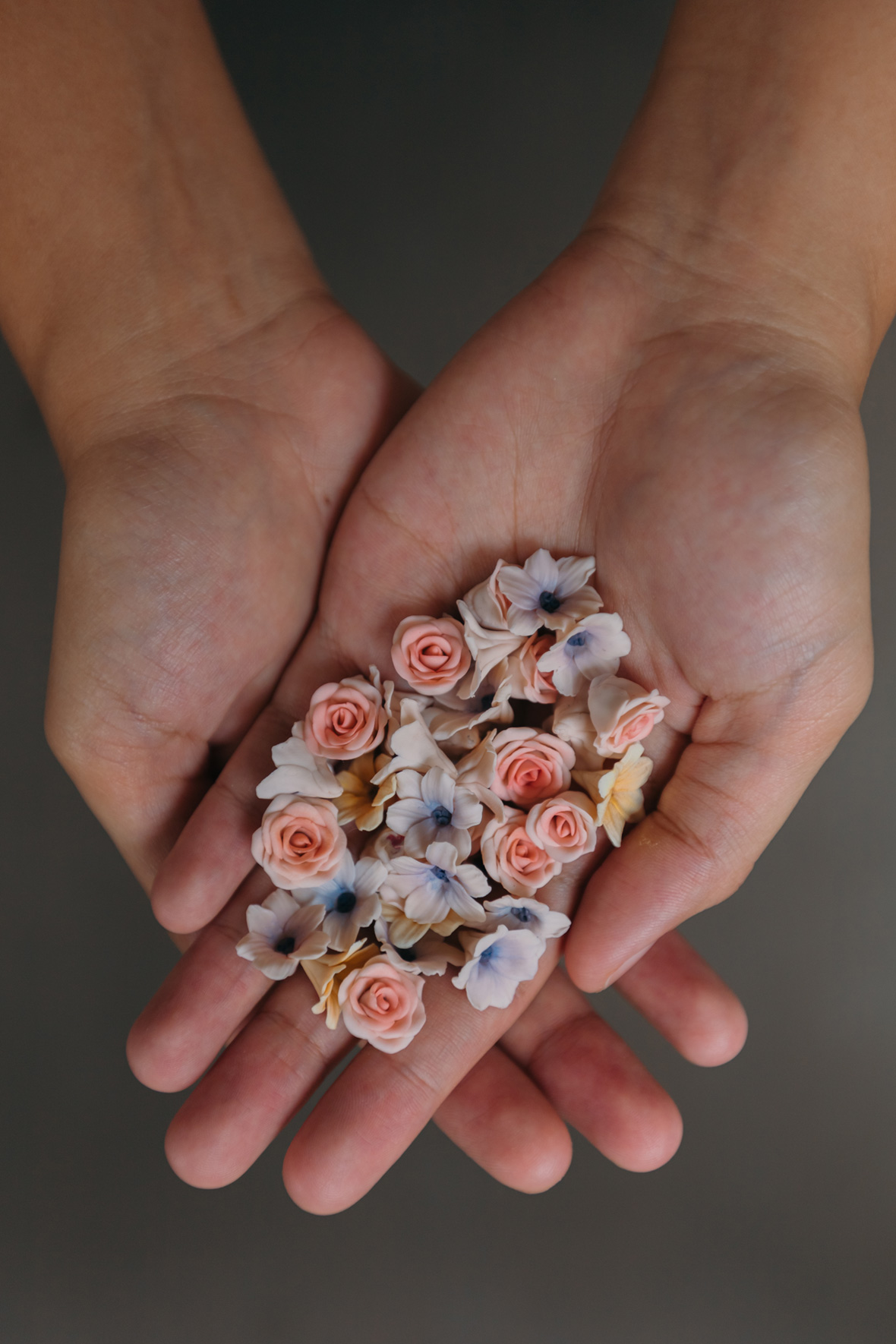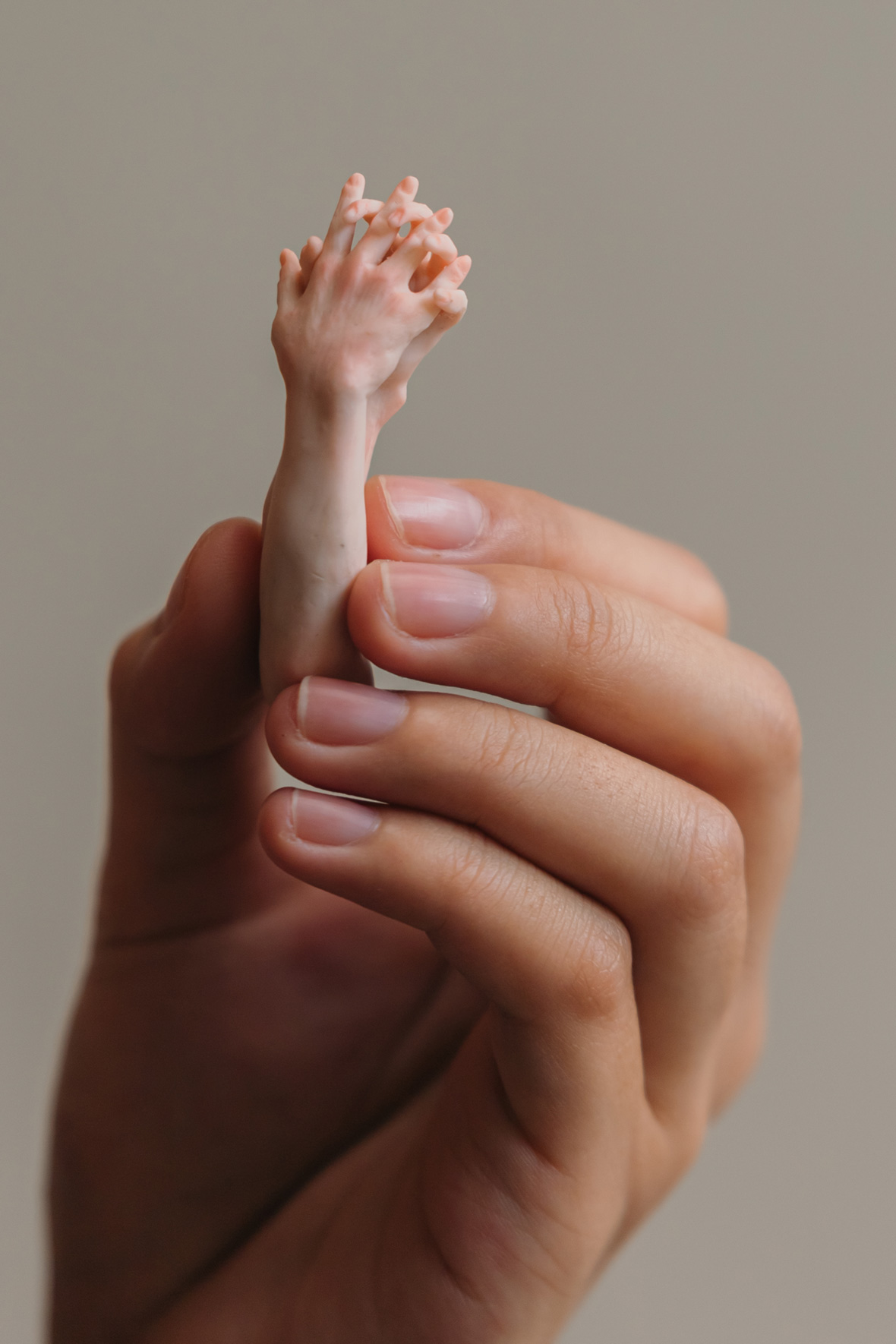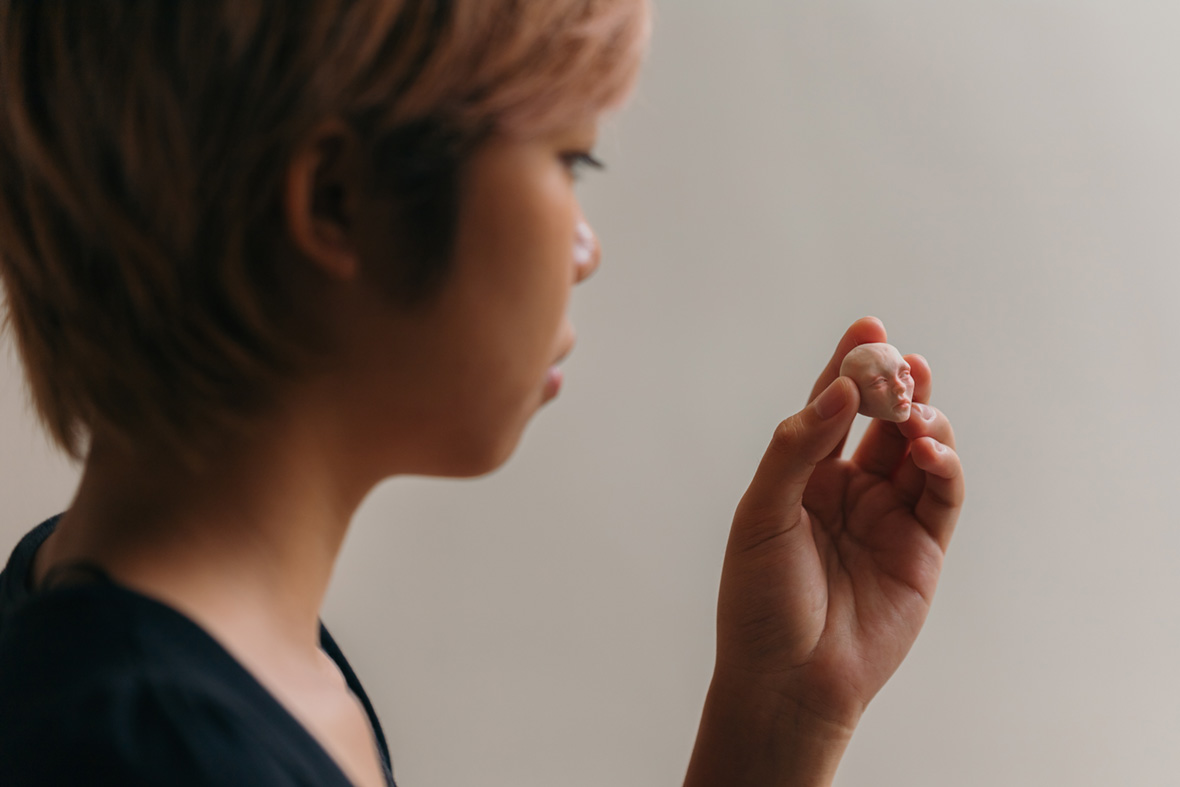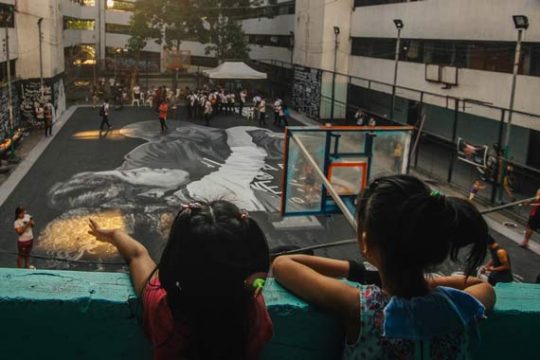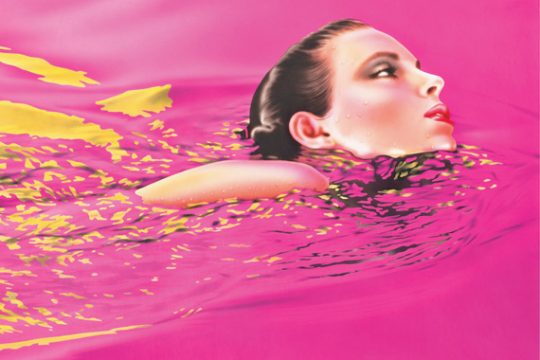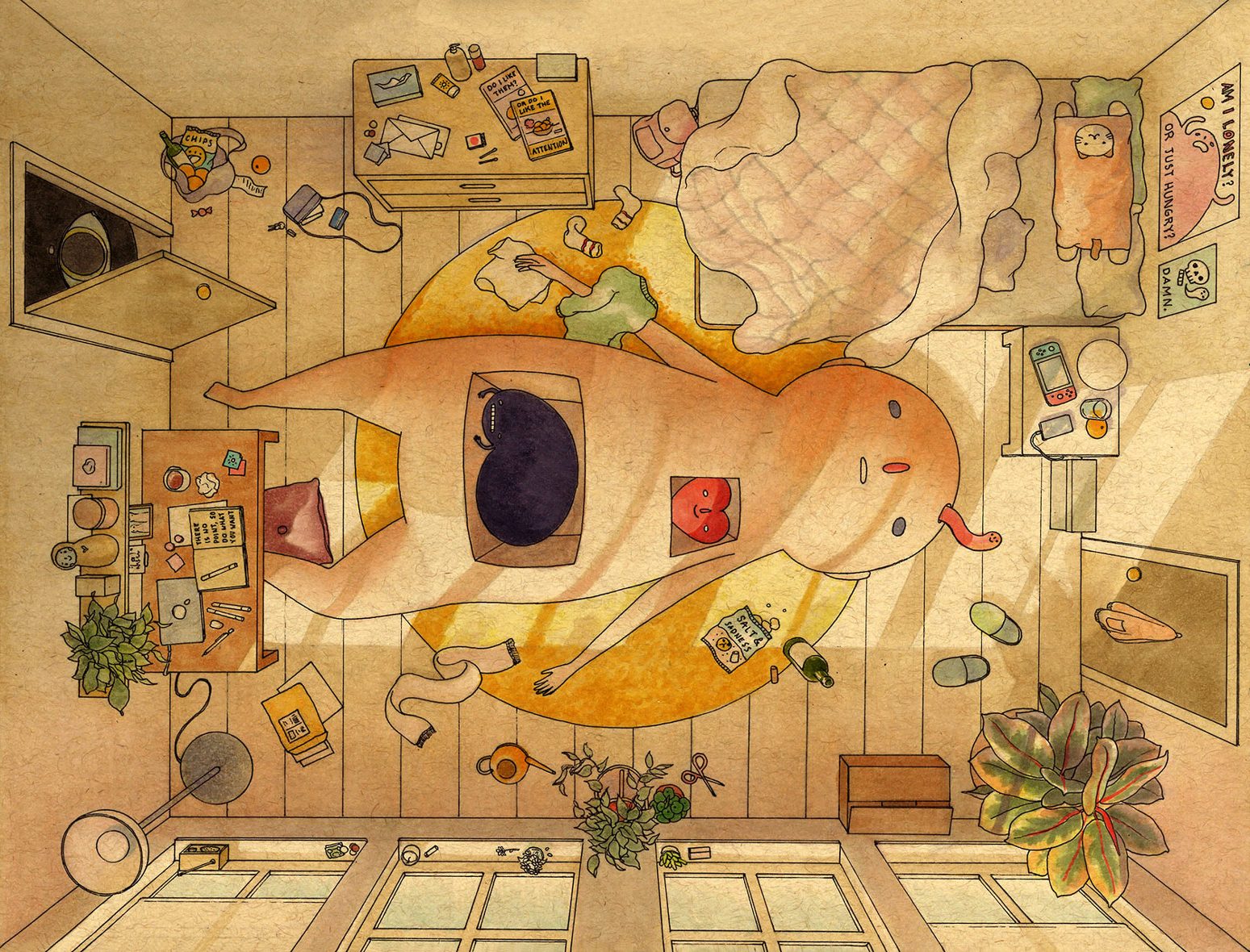
The world of Felicia Chiao radiates with the warmth and glow of a dusk sun. Her illustrations capture the comfort of a lazy day off alone, often featuring a peach-colored person with an oversized head lounging about at home. “The bald character who shows up the most is basically my version of a very fleshed out stick figure,” she laughs, explaining that she prefers leaving him without any distinctive characteristics. “Once you add hair or clothes, it has to be someone and I don’t like that. I get a lot of people asking what gender it is and I don’t know why that’s important.”
Felicia Chiao 的插画世界满溢着夕阳的温暖和光芒。在作品中,她捕捉了一个人独自度过慵懒假期的舒适感。她他画面中最常画的是一个桃色大头人,在家里舒服呆着的画面。她笑着说:“画面中出现最多的光头人,可以说就是用简笔画画的我自己。”Felicia 说自己不想为这个大头人加上任何鲜明的特征,因为,“一旦加了头发或衣服,就变成特定的人物,我不喜欢那样。有很多人问我它是什么性别,但我觉得那根本不重要。”
While Chiao’s work frequently depicts homely settings, she often treads into the bounds of fantasy and makebelieve as well, creating surreal compositions that beckon viewers to explore the dense frame and discover all of its hidden secrets. The Easter eggs of her work often reference her Asian heritage: Chinese zodiac animals, lucky cats, koi fish, and more make frequent appearances.
After moving to the US from Taiwan, Chiao lived in Texas, where she spent most of her childhood. “There was an absurdly high Asian population in my part of Texas, so I didn’t think about ‘being Asian’ until I left for college,” she says. “My work depicts an Asian-American viewpoint but I’m not really doing it intentionally. It’s just who I am.”
Felicia 的作品常以家为背景,但也会描绘幻想和虚构的世界。通过超现实主义的画作,吸引观众进入错综复杂的画中去探索,发现其中隐藏的秘密。她作品中的“彩蛋”常常是一些亚洲文化元素:中国的十二生肖动物、招财猫、锦鲤等等。
从台湾移居美国后,Felicia 在得克萨斯州度过了大半童年时光。“在我生活的得克萨斯州亚裔很多,所以在我去上大学之前,我都不会特别去想‘亚裔’这个身份。我的作品描绘的是美籍亚裔的观点,但我其实没有刻意这样做,我只是在展示我自己。”
Chiao creates everything with ink and Copic marker on brown paper, which is what loans the work its unique texture. The inherent warm tones of the medium paired with her cute illustration imbue her work a reassuring sense of calm and comfort. But this coziness is tempered by a darkness nibbling at the edges, usually depicted as a shadowy, shape-shifting form.
Felicia 几乎所有作品都是用墨水和 Copic 马克笔在牛皮纸上创作而成,因而她的作品得以有一种独特的质感。这种纸特有的温暖色调与她可爱的插图相结合,营造出了令人安心的平静和舒适感。但这种感受为边缘处的黑暗形象所吞噬了,那一片黑色的阴影在图中会呈现出各不相同的形态。

The mischievous blob of darkness was originally a visual representation of her digestion issues, which were often brought on by stress. “Initially it was drawn inside the body of characters as a stomach,” she says. “But my mom thought it was a cat, which I thought was funny, so now I just put it in random places.”
The blob has grown to symbolize negative feelings in general, but Chiao stresses that her work isn’t meant to be taken very seriously. She says that while her work does help her emotionally, it’s not as deep as many people tend to think.
Felicia 最初画这个黑色形象,是想用来代表自己因为压力产生的消化不良。她说:“起初它是作为胃的象征,画在大头人的肚子里。但是我妈妈却以为这是一只猫,我觉得还挺有趣的,所以现在就把它画到不同的位置上。”
这个人物渐渐成为了代表负面情绪的意象,但 Felicia 强调,自己的作品没有什么严肃的主题。她表示,虽然作品确实能改善她的心情,但并不像许多人想的那么深刻。
As her art has grown in popularity, Chiao has started receiving more messages from people about how it has impacted them. “I get very long, intense messages from people,” she says. “And I’m glad, but also a little surprised. If it can help others, that’s great. But I’m not going to pretend I’ve got my life figured out enough to help others.”
随着作品越来越受欢迎,Felicia 开始收到越来越多的留言与私信,讲述她的作品对自己的影响。她说:“我收到过一些很长、很热情的信息。我高兴之余,也有些意外。能帮到别人,自然是好事。但我不会假装自己已经顿悟到可以帮助他人的地步。”
Like our stories? Follow us on Facebook and Instagram.
Instagram: @feliciachiao
Behance: ~/feliciachiao
Tumblr: feliciachiao.tumblr.com
Contributor: Mike Steyels
Chinese Translation: Olivia Li
Instagram: @feliciachiao
Behance: ~/feliciachiao
Tumblr: feliciachiao.tumblr.com
供稿人: Mike Steyels
中译英: Olivia Li


